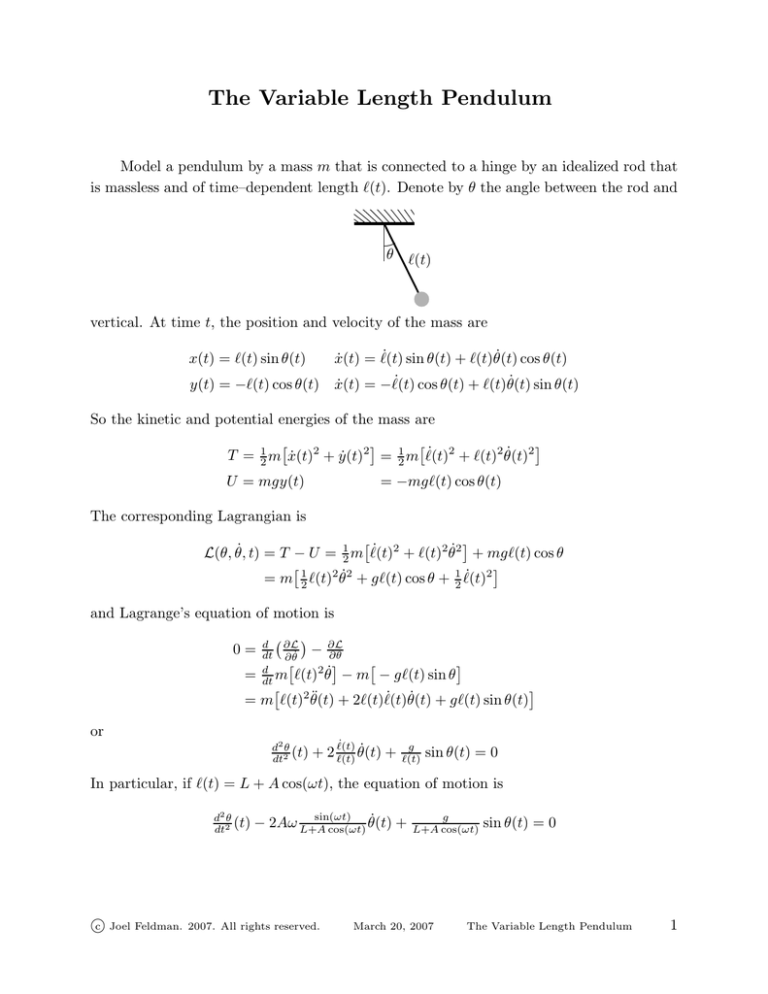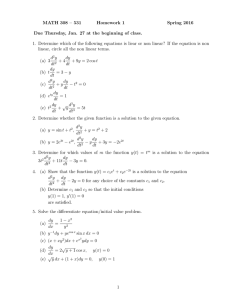The Variable Length Pendulum
advertisement

The Variable Length Pendulum Model a pendulum by a mass m that is connected to a hinge by an idealized rod that is massless and of time–dependent length ℓ(t). Denote by θ the angle between the rod and θ ℓ(t) vertical. At time t, the position and velocity of the mass are x(t) = ℓ(t) sin θ(t) ẋ(t) = ℓ̇(t) sin θ(t) + ℓ(t)θ̇(t) cos θ(t) y(t) = −ℓ(t) cos θ(t) ẋ(t) = −ℓ̇(t) cos θ(t) + ℓ(t)θ̇(t) sin θ(t) So the kinetic and potential energies of the mass are T = 21 m ẋ(t)2 + ẏ(t)2 = 21 m ℓ̇(t)2 + ℓ(t)2 θ̇(t)2 U = mgy(t) = −mgℓ(t) cos θ(t) The corresponding Lagrangian is L(θ, θ̇, t) = T − U = 12 m ℓ̇(t)2 + ℓ(t)2 θ̇ 2 + mgℓ(t) cos θ = m 12 ℓ(t)2 θ̇ 2 + gℓ(t) cos θ + 12 ℓ̇(t)2 and Lagrange’s equation of motion is 0= = d ∂L ∂L dt ∂ θ̇ − ∂θ 2 d m ℓ(t) θ̇ − dt 2 m − gℓ(t) sin θ = m ℓ(t) θ̈(t) + 2ℓ(t)ℓ̇(t)θ̇(t) + gℓ(t) sin θ(t) or d2 θ dt2 (t) ℓ̇(t) + 2 ℓ(t) θ̇(t) + g ℓ(t) sin θ(t) = 0 In particular, if ℓ(t) = L + A cos(ωt), the equation of motion is d2 θ (t) dt2 c Joel Feldman. sin(ωt) − 2Aω L+A θ̇(t) + cos(ωt) 2007. All rights reserved. g L+A cos(ωt) March 20, 2007 sin θ(t) = 0 The Variable Length Pendulum 1




